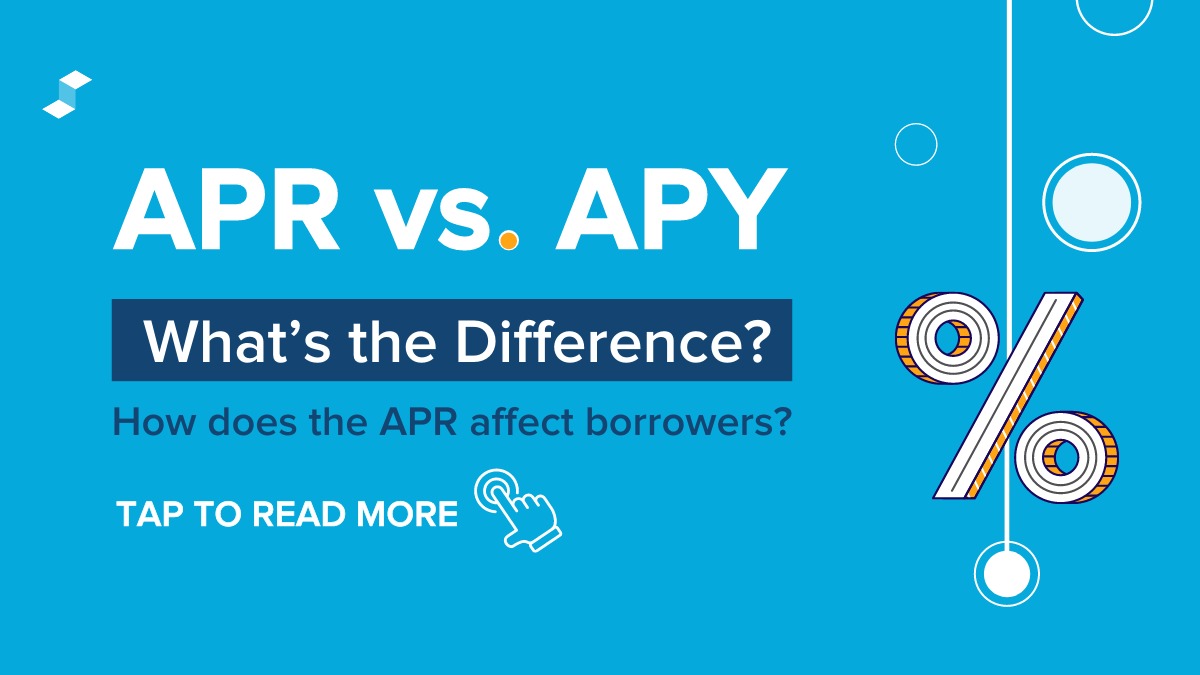Home>Finance>What Is The Difference Between Hedging And Speculating?


Finance
What Is The Difference Between Hedging And Speculating?
Published: January 15, 2024
Discover the key distinctions between hedging and speculating in the world of finance. Understand the risks and benefits of each strategy to make informed investment decisions.
(Many of the links in this article redirect to a specific reviewed product. Your purchase of these products through affiliate links helps to generate commission for LiveWell, at no extra cost. Learn more)
Table of Contents
Introduction
When it comes to managing finances and investments, two terms that often come up are hedging and speculating. These terms refer to different techniques and strategies used by individuals and entities to mitigate risks and potentially make profits in the financial markets. While both hedging and speculating involve taking positions in the market, they have different objectives and approaches.
Hedging is a risk management strategy that aims to minimize the potential losses from adverse price movements in an asset or investment. It involves taking offsetting positions that act as insurance against unfavorable market conditions. On the other hand, speculating is a strategy that focuses on making profits from price movements by taking positions based on anticipated market trends and volatility.
Understanding the difference between hedging and speculating is crucial for investors and traders as each strategy carries its own advantages, disadvantages, and implications. By understanding the purpose, time horizon, risk management, motivation, and potential outcomes of these strategies, individuals can make informed decisions about when to hedge or speculate in the financial markets.
In this article, we will delve deeper into the differences between hedging and speculating, highlighting the key factors that set them apart and exploring their respective roles in the world of finance.
Definition of Hedging
Hedging is a risk management strategy used by individuals, companies, and institutions to protect themselves against potential losses resulting from adverse price movements in an asset or investment. It involves taking offsetting positions in the market that act as a form of insurance against unfavorable market conditions.
When it comes to hedging, the primary objective is to reduce or eliminate the risk of price fluctuations in an underlying asset. This is typically done by taking a position in a related or correlated asset, such as an options contract, futures contract, or derivative instrument.
By hedging their positions, investors and businesses can effectively mitigate the potential losses that could occur due to adverse market conditions. It allows them to safeguard their investments and assets, ensuring a more stable and predictable financial outcome.
For example, let’s say a company is engaged in international trade and relies heavily on a specific commodity, such as oil, to run its operations. The company may choose to hedge its exposure to oil price fluctuations by entering into futures contracts, which would lock in a specific price for a predetermined time period. Regardless of whether the price of oil in the market goes up or down, the company has protected itself from the risk of significant losses.
Hedging can also be applied by individual investors to protect their investment portfolios. For instance, an investor who holds a large number of shares in a particular company may decide to hedge their position by purchasing put options, which would provide them with the right to sell the shares at a predetermined price. If the stock’s price experiences a significant decline, the investor can exercise the put option and sell the shares at the predetermined price, effectively reducing their potential losses.
Overall, hedging plays a vital role in risk management by allowing individuals and organizations to safeguard their positions and assets against unfavorable market conditions. It provides a degree of security and peace of mind, allowing them to focus on other aspects of their financial strategies.
Definition of Speculating
Speculating, on the other hand, refers to a strategy in which individuals or entities take positions in the financial markets with the primary goal of making a profit from price movements. Unlike hedging, which is focused on risk management and protection, speculating involves taking calculated risks in the hopes of maximizing returns.
Speculators analyze market trends, economic indicators, and other factors to identify potential opportunities for price fluctuations. They aim to anticipate and capitalize on these price movements, whether they are in stocks, bonds, commodities, currencies, or other financial instruments.
The approach of speculating is often characterized by a shorter time horizon, as speculators typically hold their positions for a relatively short period of time, ranging from minutes to weeks. They are more concerned with the short-term price movements and volatility in the market.
Speculating can take various forms, including buying and selling stocks based on anticipated price movements, engaging in day trading to capitalize on intraday price fluctuations, or trading currencies in the foreign exchange market based on macroeconomic factors.
It’s important to note that speculating carries a higher level of risk compared to hedging. Speculators intentionally expose themselves to market volatility and the potential for losses, as their primary objective is to generate profits from price movements. While successful speculators can achieve significant gains, there is also a significant possibility of incurring losses.
For example, a currency speculator might study the economic and political factors affecting a particular country and anticipate that its currency will appreciate against another currency. They would then purchase that currency in the hopes of selling it at a higher price in the future and making a profit.
Speculating can be a challenging and complex endeavor, requiring a deep understanding of market dynamics, analysis tools, and risk management techniques. It often involves leveraging financial instruments such as options, futures, and margin trading to amplify potential returns, but this also increases the level of risk.
Overall, speculating is driven by the quest for profitability and the ability to capitalize on market opportunities. It is a strategy employed by traders and investors who are willing to take calculated risks in pursuit of financial gains.
Purpose of Hedging
The primary purpose of hedging is risk management. Hedging allows individuals, companies, and institutions to protect themselves against potential losses resulting from adverse price movements in an asset or investment.
One of the main reasons for hedging is to reduce or eliminate the uncertainty and volatility associated with the financial markets. By taking offsetting positions, hedgers aim to create a balance that offsets any potential losses in their investments, thereby stabilizing their financial outcomes.
Hedging is particularly important for businesses operating in industries that are exposed to fluctuations in input prices or exchange rates. By hedging against these price movements, companies can better manage their production costs and plan their budgets more effectively. This helps in maintaining a stable financial position and avoiding unexpected losses.
Another purpose of hedging is to protect investors and portfolio managers from the impact of adverse market conditions. By using derivatives or other hedging instruments, investors can mitigate the risk associated with holding a specific asset or security. This ensures that their investment portfolios are less susceptible to sudden price declines or market shocks.
In addition to risk management, hedging can also be used by speculators who want to protect their speculative positions. Speculators who have taken positions based on the expectation of favorable price movements can use hedging strategies to limit their potential losses if the market moves against them.
Furthermore, hedging can provide peace of mind and stability for investors and businesses. It allows them to focus on their core operations and long-term financial goals without constantly worrying about sudden market movements or unexpected events.
Overall, the purpose of hedging is to minimize the impact of adverse price movements and to create a more secure and predictable financial outcome. It provides individuals, companies, and institutions with a means to manage risk, protect their investments, and navigate the uncertainties of the financial markets in a more controlled manner.
Purpose of Speculating
The purpose of speculating is primarily to seek financial gain by taking advantage of price movements in the financial markets. Unlike hedging, which focuses on risk management and protection, speculating involves taking calculated risks with the aim of maximizing profits.
Speculators engage in the financial markets with the goal of profiting from short-term price fluctuations. Their purpose is to capitalize on market opportunities and generate returns by accurately predicting and timing these movements.
One of the main purposes of speculating is to leverage market inefficiencies and capitalize on price discrepancies. Speculators believe that they can identify pricing inefficiencies in the market and take advantage of them to earn profits. By actively buying and selling financial instruments, such as stocks, bonds, or commodities, based on their analysis of market trends and indicators, speculators aim to exploit these opportunities and generate returns.
Speculating also plays a crucial role in providing liquidity to the financial markets. Speculators are willing to take on risk by buying or selling assets, even in the absence of fundamental need or long-term investment objectives. This liquidity ensures that there are always buyers and sellers in the market, contributing to the smooth functioning of the financial ecosystem.
Furthermore, speculating serves as a catalyst for price discovery. By actively participating in buying and selling activities, speculators contribute to the price formation process in the market. Their actions and transactions help establish fair market prices based on the supply and demand dynamics of the underlying assets.
Speculating can also serve as a means of diversification for investors. By including speculative positions in their portfolios, investors can potentially enhance their overall returns. Investing in assets that have the potential for higher short-term gains can balance out the slower growth or stability of other investments, creating a more diverse and potentially profitable portfolio.
It’s important to note that speculating comes with a higher level of risk compared to other investment strategies. The purpose of speculating is to achieve substantial profits, but there is also a significant possibility of incurring losses. Speculators must carefully analyze market conditions, make informed decisions, and employ risk management techniques to minimize potential downsides.
In summary, the purpose of speculating is to seek financial gains by taking advantage of price movements in the financial markets. It involves actively buying and selling assets to capitalize on market opportunities, provide liquidity, and contribute to price discovery. While it carries higher risk, speculating can also offer the potential for higher returns and serve as a diversification strategy for investors.
Differences in Time Horizon
One of the key differences between hedging and speculating lies in their respective time horizons. Time horizon refers to the duration for which an investment or position is held.
Hedging is typically associated with a longer time horizon. Hedgers take positions in the market to protect themselves against potential losses over an extended period. They use hedging strategies to create a hedge that mitigates risks for weeks, months, or even years. The focus is on managing risk over the long term and maintaining a stable financial position.
On the other hand, speculating is characterized by a shorter time horizon. Speculators enter and exit positions in the market with the goal of profiting from short-term price fluctuations. Their positions are often held for minutes, hours, days, or sometimes a few weeks. Speculators closely monitor market conditions and rely on timing the market to capture potential gains or take advantage of short-term mispricings.
The differences in time horizon reflect the contrasting objectives of hedging and speculating. Hedging is driven by a desire to protect investments against potential losses over an extended period, while speculating aims to profit from short-term price movements.
Some examples can illustrate these differences. A company in the airline industry could hedge against fluctuations in jet fuel prices by entering into futures contracts for the next six months. This strategy ensures that the company has a fixed price for fuel, protecting them against higher costs over an extended period of time. In contrast, a speculator might take a short-term position in a stock, expecting it to increase in value within a few days based on technical indicators or positive news.
It’s important to note that there can be overlaps between hedging and speculative strategies, especially when it comes to individual investors or portfolio managers who engage in both activities. For example, an investor might hedge their long-term stock portfolio by purchasing put options in case of a market downturn, while also engaging in short-term speculative trades to take advantage of volatility or short-term opportunities.
In summary, the time horizon is a significant distinguishing factor between hedging and speculating. Hedging strategies involve longer-term positions to manage risk over an extended period, while speculating focuses on short-term positions to profit from price movements in a more immediate timeframe.
Differences in Risk Management
Risk management is an important aspect of both hedging and speculating, but they approach it in different ways.
Hedging is primarily focused on risk management and aims to minimize the potential losses from adverse price movements. It involves taking offsetting positions that act as a form of insurance against unfavorable market conditions. The goal is to protect existing investments or assets from significant downside risks.
Hedgers seek to reduce their exposure to market volatility and uncertainty by using various hedging instruments such as options contracts, futures contracts, or derivative securities. By taking offsetting positions, hedgers are able to lock in a certain price or limit the potential downside of their investments.
On the other hand, speculators approach risk management differently. While they are aware of the risks associated with their positions, they are more willing to take on higher levels of risk in pursuit of potential profits. Speculators actively seek out market opportunities and analyze factors that can influence price movements in order to make decisions that offer a favorable risk-to-reward ratio.
Speculators understand that with higher risk comes the potential for higher returns. They capitalize on short-term price fluctuations by taking calculated risks, often using leveraged trading and derivatives to amplify potential gains. However, speculators also acknowledge that there is a significant possibility of incurring losses and must employ risk management techniques to minimize potential downsides.
While hedgers focus on preserving capital and minimizing losses, speculators focus more on managing the risk associated with their speculative positions. They set stop-loss orders to limit the amount of potential loss they are willing to tolerate and use risk management strategies such as position sizing and diversification to spread their risk across different assets or trades.
Furthermore, hedging is often used by investors and businesses to protect against specific risks, such as fluctuations in commodity prices or interest rates. Speculators, on the other hand, are more concerned with general market conditions and the potential for short-term price movements.
In summary, the approach to risk management differs between hedging and speculating. Hedging strategies focus on minimizing potential losses and protecting existing investments, whereas speculators are willing to take on higher levels of risk in pursuit of potential profits. Hedgers use offsetting positions as a form of insurance, while speculators actively manage and mitigate risks associated with their speculative positions.
Differences in Motivation
The motivation behind hedging and speculating differs significantly, reflecting the contrasting objectives of these strategies in the financial markets.
The primary motivation behind hedging is risk management and protection. Hedgers aim to safeguard their investments or assets against potential losses resulting from adverse price movements. They are concerned about preserving capital, maintaining stability, and minimizing downside risks.
Hedging is often driven by the need to hedge against specific risks or uncertainties that can impact the value of investments. For example, businesses may hedge against fluctuations in commodity prices, exchange rates, or interest rates to protect their profitability and operational stability. Investors may hedge their portfolios against market downturns to limit potential losses.
On the other hand, the motivation behind speculating is profit-making. Speculators actively seek out market opportunities and price discrepancies to capitalize on short-term price movements in order to generate returns.
Speculators are motivated by the potential for high profits and the ability to take advantage of market inefficiencies. They analyze market trends, economic indicators, and other factors to identify potential opportunities for short-term price movements. Speculators are often driven by the thrill of active trading and the excitement of anticipating and acting upon market trends.
The motivation behind speculating extends beyond risk management or the need to protect against specific uncertainties. Speculators are willing to take on greater risks in pursuit of potentially higher returns. They are more focused on market dynamics, timing their trades for optimal entry and exit points to capture profit.
Additionally, speculators may be motivated by short-term trading strategies, such as day trading or swing trading, in an attempt to profit from intra-day or short-term price fluctuations. They may use technical analysis, chart patterns, or other indicators to identify potential price movements and make trading decisions based on these signals.
While hedgers aim to preserve capital and manage risks, speculators are primarily driven by the desire for profitability and market opportunities. They actively seek out and capitalize on short-term market trends and price movements, always aiming to be on the winning side of trades.
In summary, the motivation behind hedging is risk management and protection of investments, whereas speculating is motivated by the potential for profit and taking advantage of short-term market opportunities. Hedgers focus on stability and minimizing downside risks, while speculators embrace the higher risks associated with seeking higher returns and capitalizing on market inefficiencies.
Differences in Outcomes
The outcomes of hedging and speculating in the financial markets differ based on their respective objectives and strategies.
Hedging, as a risk management strategy, aims to minimize potential losses from adverse price movements. The outcome of hedging is typically a reduction in the impact of market fluctuations on portfolio or investment values. By taking offsetting positions, hedgers create a balance that offsets any potential losses in their investments, resulting in a more stable and predictable financial outcome.
While hedging may limit potential losses, it also limits potential gains. When prices move favorably, the offsetting positions in hedging may result in reduced profits compared to a fully exposed position. Hedgers accept the trade-off of potentially lower returns as their main goal is risk mitigation rather than maximizing profits.
On the other hand, the outcome of speculating is highly dependent on the accuracy of market predictions and timing. Speculators aim to profit from short-term price movements in the market. If their predictions and timing are correct, they can generate significant profits from their positions.
However, speculating also carries a higher level of risk compared to hedging. If speculators’ predictions fail or their timing is off, the outcome can result in losses. Speculators must carefully analyze market conditions, use risk management techniques, and be prepared to accept the possibility of incurring losses as part of their speculative endeavors.
It’s important to note that the outcome of speculating can vary significantly. Successful speculators who accurately predict market movements and execute well-timed trades can generate substantial profits. On the other hand, less successful speculators may experience losses or earn smaller profits.
Speculating involves actively buying and selling assets based on short-term price movements, and the outcomes can be influenced by a wide range of factors, including market conditions, economic indicators, news events, and trading strategies employed.
Furthermore, speculating can lead to relatively quick outcomes. Speculators often hold their positions for short periods, from minutes to weeks, compared to hedgers who typically have longer-term positions. Speculating is more focused on taking advantage of short-term opportunities, while hedging aims to manage risk over a longer time horizon.
Overall, the outcomes of hedging and speculating differ in terms of risk management and potential returns. Hedging aims to reduce the impact of market fluctuations on investments, resulting in more stable financial outcomes. Speculating, on the other hand, seeks to generate profits by capitalizing on short-term price movements, but the outcomes are highly dependent on accurate predictions and timing, with the potential for both significant gains and losses.
Conclusion
In conclusion, hedging and speculating are two distinct strategies employed in the financial markets with different objectives, time horizons, risk management approaches, motivations, and outcomes.
Hedging focuses on risk management and aims to protect against potential losses resulting from adverse price movements. It involves taking offsetting positions to create a hedge that mitigates risks over the long term. Hedging provides stability and security for individuals, companies, and institutions, allowing them to navigate market uncertainties and preserve capital.
On the other hand, speculating is driven by the motivation to seek financial gains through taking calculated risks and capitalizing on short-term price movements. Speculators actively analyze market trends, economic indicators, and other factors to identify potential opportunities for profit-making. While speculating carries higher risk and the possibility of losses, successful speculators can generate substantial profits by timing their trades correctly.
The time horizons differ significantly, with hedging focusing on longer-term positions to manage risk over time, while speculating targets shorter-term positions to capture short-term price movements. Hedging aims to minimize the impact of adverse price fluctuations over the long term, whereas speculators seek to exploit short-term market opportunities.
Furthermore, hedging emphasizes risk management and protection of investments or assets, while speculators prioritize profit-making and taking advantage of market inefficiencies. Hedging provides stability and predictability, while speculating offers potential higher returns, but with increased risk.
It’s important to note that hedging and speculating are not mutually exclusive, and there can be overlaps between the two strategies. Investors and portfolio managers may engage in both hedging and speculating activities, depending on their investment objectives and risk tolerance.
In the end, understanding the differences between hedging and speculating is essential for investors and businesses alike. By discerning the purposes, time horizons, risk management approaches, motivations, and potential outcomes of these strategies, individuals can make informed decisions when it comes to managing their finances and investments.
Ultimately, both hedging and speculating play significant roles in the financial markets, offering different approaches for individuals, businesses, and institutions to navigate the complexities and uncertainties of the financial world.














